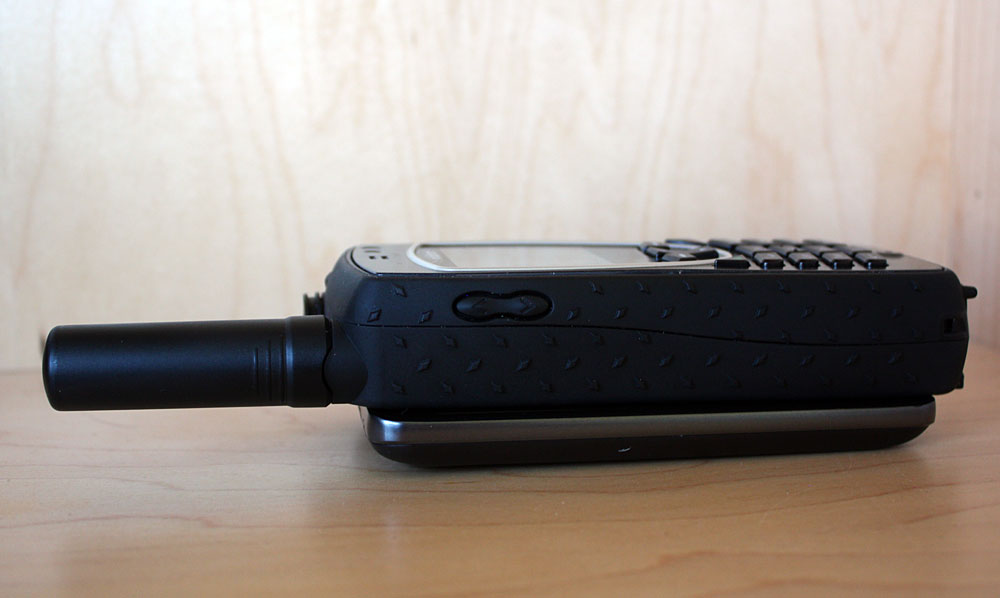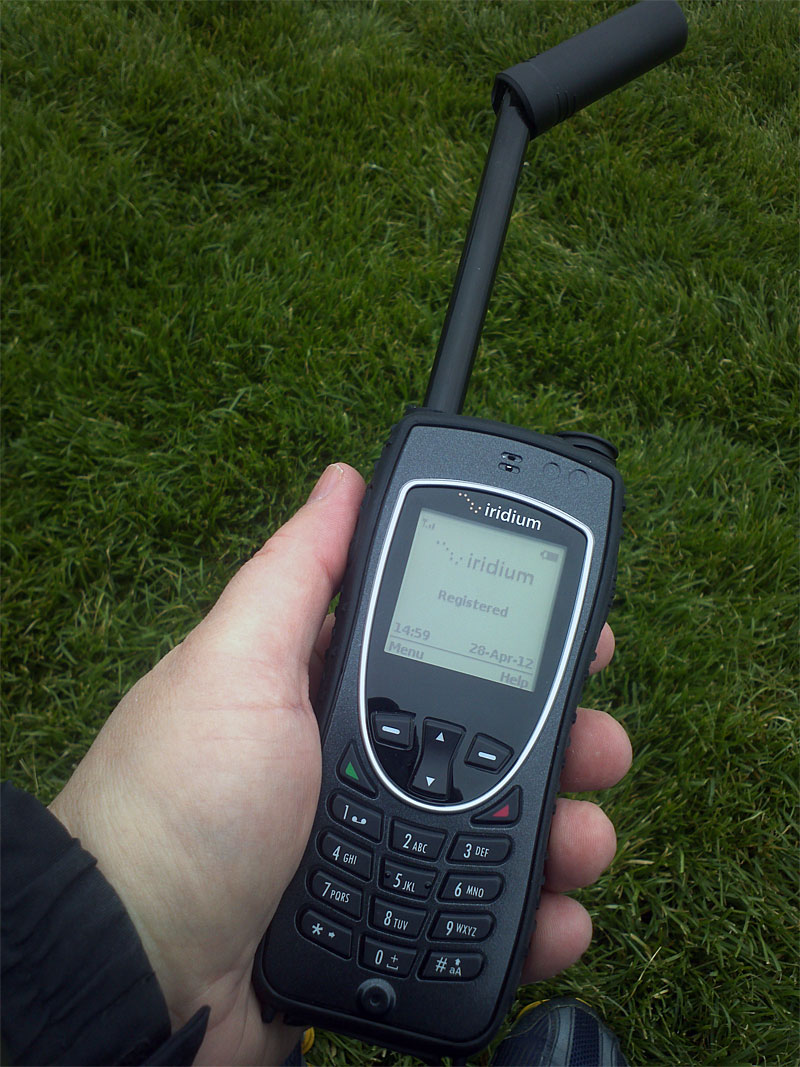The Iridium 9575 Extreme Satellite Phone Hands-on Review: The Ultimate Phone Anywhere on the Planet
It’s the “smart” in smartphone that you did not see coming.

I recently had plenty of discussions surrounding the term “smartphone.” What exactly is a smartphone? Since we are now also beginning to loosely talk about smart TVs and consider any TV that may be able to connect to Netflix and run a Google search on a big screen a “smart” TV, it appears that the term “smart” may be, in most cases, an exaggeration. It may very well depend on your own expectations of what would qualify as being “smart.” I have run into so many issues with my Android phone that I have serious doubts whether these new smartphones are, in fact, smart. If OS updates are causing those phones to crash even during calls, and if they need to be rebooted at least twice daily, are they really “smart?”
So, can you define “smart” in a phone differently? I believe so. If you remove the ability to run apps as the cornerstone of being considered smart, what about an ability to give you ultra-mobility, make you independent of cell towers, enable you to call from wherever you are and end those ridiculous out-of- country roaming charges from your friendly wireless carrier? I would consider this feature as a form of “smart” as well. You would end up looking at a satellite phone and getting the idea of taking such a phone from a military battlefield or a freight ship to the mainstream. As strange as it sounds, the latest generations of satellite phones turn this into a feasible idea for some of us. Here are my impressions of Iridium’s most advanced phone, the 9575 Extreme.
Iridium? Huh?
If you are not at least in your mid-30s, there is a good chance that you have never heard about Iridium. When I got the review phone, a friend of mine asked, “Iridium? They are still around?” Yes, they are. Let’s briefly look at their history.
Bary Bertiger, an engineer at Motorola, developed the first concept of a satellite phone service in the 1980s. He envisioned 77 low-earth-orbiting (LEO) satellites. The name “Iridium,” by the way, dates back to this concept, as the number of satellites was the same as the number of electrons in the element Iridium. In 1990, the design was trimmed to 66 satellites, and Motorola approved the buildup of the satellite network for a planned cost of $3.37 billion. By 1998, Motorola had spent more than $5 billion and had deployed 66 satellites and six spares that are circling the earth at an altitude of 485 miles and a speed of 16,382 mph. The network provides 100 percent global coverage.
Unfortunately, Iridium never had a chance of succeeding with the initial product plan. The company needed about 1 million paying customers – customers who were willing to spend about $10 per minute for a call – but only reached approximately 15,000 customers within two years. Consider the fact that Boeing charged Motorola $540 million per year just to maintain the satellites. It is clear why the service failed and basically shut down when the network went into Chapter 11 in August 1999. The company had to close its doors when Motorola, which financed the network on the back of huge loan agreements, defaulted on a $1.5 billion loan.
In December 2000, the network was acquired for pennies on the dollar by investor Dan Colussy. He got the $5 billion network for just $25 million, renegotiated the Boeing contract, created the new “Iridium Satellite LLC” and enabled a new start. He removed the mainstream focus and instead targeted the service at industrial, government, military and academic applications. The result is that Iridium is now posting a net income of about $12 million per quarter on revenues of just $100 million. The service had 544,000 subscribers as of March 31. The company is publicly listed and currently trades on Nasdaq with a market cap of $619 million. That’s not bad for the initial $25 million investment, but it’s still far below the original value of its assets.
Get instant access to breaking news, the hottest reviews, great deals and helpful tips.
Usage model: A phone, anywhere and anytime
Does a cell phone provide us with enough mobility? Possibly, but not if you answer the question from a certain perspective. A few years back, I chatted with John Edwards, a former British RAF engineer, who claimed that he was the first person to invent cellular phone service in 1969, but he failed at marketing and inventing the technology. He told me that the bank manager, whom he had asked for a £250,000 loan, told him that “no one wants to carry around a phone all the time.” As ridiculous as that sounds today, could we envision that, even with our cell phones in our pockets, our mobility is limited?
Coverage is far from being at 100 percent. Also, the original story of the invention of Iridium says that Karen Bertiger, who was honeymooning with husband Bary in Turtle Cay in the Bahamas, complained that she did not have access to a phone from the beach. You may have phone service in Turtle Cay today, but what about those places you do not? I am not talking about Antarctica or your boat on an ocean, but those uncovered areas in the U.S. or when you are travelling abroad.
As long as carriers have not planted cell towers everywhere, satellite service is an intriguing choice for some verticals and even consumers who travel often and far. In that case, a satellite phone is particularly interesting as it guarantees coverage and is even cheaper to use than a cellphone or smartphone.
Iridium 9575 Extreme: First Impression and Specs
The 9575 is not what kids would imagine a phone to look like today. Its appearance and weight is closer to the mid-90s versions of Nokia or Motorola phones. This particular version is dust- and spill-proof (as it is meant to be used outside with direct view to satellites) and covered in a sturdy rubber padding that prevents damage to the phone when it is dropped.

It has a monochrome display (no, it’s not a touch screen) that can show basic graphics, but will, 99 percent of the time, be used for text. The display can show up to 200 characters at once. The phone can text via SMS and supports short emails, has a phone book (up to 100 entries), voicemail, and a choice of eight ring and alert tones. Standby time is about 30 hours; talk time is up to 3.5 hours. These are very conservative numbers. I have seen standby times of up to 45 hours during my review of the phone. The entire phone is 140 x 60 x 27 mm in size, which is about as wide as an iPhone, but the 9575 is significantly longer than and three times as deep as Apple’s phone. It’s not the phone that hides itself in your suit pocket. The phone is even larger when you actually call, as it needs a massive satellite antenna that is pulled out of the shell.

Iridium was pretty tight-lipped about what is inside the phone, and I was not ready to break their phone to find out more. What I was told is that the device integrates Iridium’s Core 9523 satellite transceiver module, the smallest board of its kind available today. The company says it’s 90 percent more compact than its predecessor, the 9522B, and consumes about 2.3 watts, on average, during a call. The maximum power consumption is 3.1 watts. By the way, power-up of the phone is about 28 seconds. Satellites were typically acquired within 10 to 20 seconds during my test.
If I have not lost you by now, you are lucky, because the cool part starts right here. Let’s leave the global coverage aside for a moment. The phone comes with an SOS button that looks like a rocket launcher right out of a James Bond movie. It can be configured with a predetermined contact, which will receive your GPS location every 5 minutes in an emergency, provided you have the phone with you and it is charged. Also included is a cradle with a USB port that connects the phone to a laptop, turning the 9575 into a data modem. Don’t expect broadband speeds, but Iridium says that maximum speeds are about 13 kbps with compression software and 2.4 kbps raw throughput. It’s not the service to download music files or browse the web, but it is enough for text messages and checking your email. Remember, early Internet users have grown up with 9.6 kbps and 14.4 kbps modems.

Of course, I did not check global coverage, but I can confirm that the phone works just fine in the areas that my T-Mobile service does not. The call quality is not as clear as when it is delivered by cellular phones and has a certain dull tone to it. Some people in Europe I called also complained about poor call quality. That said, the calls worked reliably and none were dropped. The phone also works pretty much like any other phone with the exception that it is a phone with no home area code. For example, calls will always have to start with country codes, such as 001 for the U.S., 0049 for Germany, or 0086 for China.
Iridium recently announced the AxcessPoint, which creates a Wi-Fi hotspot in combination with the 9575, which may be even more extreme than the phone itself. Sure, it allows you to connect the phone to iOS and Android and use your iPhone while you are waiting out an ice storm in a tent in Antarctica, but most users may not need this feature. It’s the plain calling and connectivity capability that makes this phone “smart.”
Cost
Cost killed the original Iridium; today’s Iridium isn’t exactly cheap either. The phone itself is about $1,700 and comes with all the extras sans Wi-Fi access point. You get the USB cradle, a headset, a charger, a signal amplifier and even a leather case. So, the cost of three basic iPhones gets you started. Calls are made via prepaid packages that vary in price and depend on the number of minutes you purchase. The low-volume package was offered by retailers for about $1.30 per minute, and 5,000 minute packages went down to about $0.75 per minute. Keep in mind that this is a standard rate globally and applies no matter if you are calling from Chicago to New York or from Los Angeles to Tokyo.
There is another cost item that applies to those who are calling a satellite phone. Depending on the markups of landline and wireless carriers, it will cost somewhere from $3 to $5 per minute to call a satellite phone. However, Iridium also offers the phone owner the ability to acquire a local U.S. number and pay for inbound charges. In effect, the call will incur just regular charges to the U.S. for the caller, while the Iridium subscriber will pay about $1.50 per minute for a received call. The interesting aspect of this scenario is that a satellite phone can easily make sense for a lot of people. For example, AT&T charges up to $4.99 per minute when calling to or from another country. Conceivably, a satellite phone can be a bargain for frequent travelers.

Takeaway
I’ll be honest. I am in love with this phone, and if I were travelling enough, I would not give it back. It’s the sense of freedom and security that is provided by it that even the fanciest smartphone cannot provide. Sure, you can’t play Angry Birds on it, but sometimes being smart is just about being able to place a call and not about a retina display or an accelerometer.
The 9575 Extreme is the ultimate phone available today and is quite impressive.
Wolfgang Gruener is Director, digital strategy and content experience at American Eagle, where he specializes in strategic data analysis, user behavior models and information architecture (IA), as well as content strategy and governance. He was also Managing Editor of the website TG Daily and contributor to sites including Tom's Guide and Tom's Hardware.
-
What maintenance goes into the satellites in low earth orbit? When the zombie apocalypse happens, how long before the satellites die out?Reply
Since the phone can be charged by solar I was thinking about one of these for my emergency kit. -
alidan i dont care who you are or what you do,Reply
if you ever do something stupid, or go to insane areas where no cell service will ever find you, this phone is a must.
remember this is an emergency phone, think of it like a life vest on a boat. -
zaznet iceman1992Would love one if they bring the prices downReply
More subscribers can bring a lower price. With the high cost of international roaming on cellular networks it is a good investment for those who need a true global phone. -
dark_lord69 This phone would have saved about 98% of the people on the show "I Shouldn't Be Alive".Reply -
Dragoon21b Just for travel? You have obviously never been out in deepest darkest west Texas or the outback of MontanaReply -
zetzabre well, it should be good for insane areas, but for people who live in cities (the great majority), that phone is just crap.Reply
Anyway, "smart" is a relative term. For some this phone is smart. For me, that phone is an extreme area survivor (in terms of call signal).
For me, a "smartphone" is a phone that can understand the requirements of the user with very few commands (if none, it's even better), and can get additional functions in little time (that's why all actual smartphones can get applications throught the internet). It's true that updates and reboots are annoying, but the "real smartphones" can be programmed to apply the update in specific times (for example, at 3:00 am, when i'm sleeping). Battery life is another issue, so a smartphone must use the resources very efficiently (not using full power when not needed is one of the good ways, and the addition of solar power could be good).
Don't take me wrong Wolfgang Gruener, but for me your article is totally out of place. You should first read the definition os "smart" and "smartphone" and then write an article about smartphones.
And for all users: Sorry for my bad english, i'm still learning... -
shin0bi272 Thanks for this review. Ive been hoping to see some satellite phones coming to the public sector market for about 10 years now. In fact I had originally refused to buy a cell phone due to spotty coverage in remote areas (or even in my apartment complex in the middle of durham ironically) claiming untill they had a sat phone with cell service and gps I wouldnt get one. Well the cell phone market exploded and they now have cell and gps and are just missing the sat portion. So now we are starting to see some sat phones hitting the market and as soon as they converge with something like the iphone or samsung galaxy (like say while on wifi or cell you can do all the smart phone stuff but while on sat its just for voice, text, and email) then it will be the ultimate phone.Reply -
razor512 why not take the normal satellite phone service, then offer a price that is reasonable, at least compared to services such as satellite TV where instead of dealing with 2.4kbit of info, they are sending out 500+ 8-20mbit streams on each satellite and still manage to charge $60 per monthReply
if they were to lower their price to like $30 a month for unlimited usage, then you would see almost every frequent traveler get a satellite phone and they will probably turn a much larger profit -
I presume you did this review before Iridium recalled all the 9575s? Once again Iridium have launched a product (remember openport) that they've had to recall!Reply
